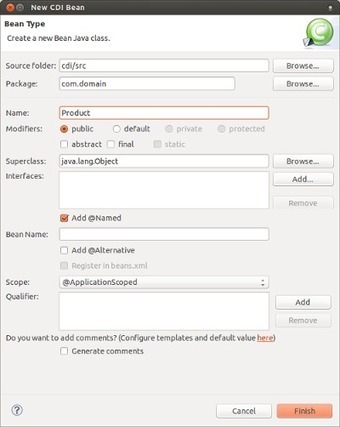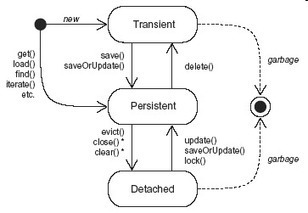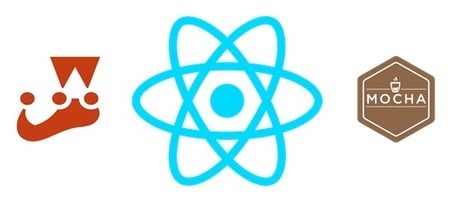 Your new post is loading...
 Your new post is loading...

|
Scooped by
Mickael Ruau
April 5, 2021 1:36 AM
|
For object-oriented design we follow the SOLID principles. For microservice design we propose developers follow the “IDEALS”: interface segregation, deployability (is on you), event-driven, availability over consistency, loose-coupling, and single responsibility.

|
Scooped by
Mickael Ruau
July 23, 2020 8:31 AM
|
L'architecture Leaf-Spine est une topologie de réseau à deux couches, composée de commutateurs « feuilles » (Leaf) et de commutateurs « troncs » (Spine). Les serveurs et le stockage sont reliés aux commutateurs Leaf qui, à leur tour, sont connectés aux commutateurs Spine.
Suite de l'article ci-dessous

|
Scooped by
Mickael Ruau
March 14, 2020 10:10 AM
|
Learn how a data center fabric is the basis of a cloud data center architecture and how it affects how applications are delivered and deployed.

|
Scooped by
Mickael Ruau
November 4, 2019 8:42 AM
|
Facebook's enormous scale comes with enormous technological challenges, which go beyond conventional available solutions. For example, Facebook decided to abandon Microsoft's Bing search engine and instead develop its own revamped search capabilities. Another important area is Facebook's massive networking needs, which called for a whole new paradigm, code named data center fabric.

|
Scooped by
Mickael Ruau
October 21, 2019 6:11 AM
|
MapReduce est un patron d'architecture de développement informatique, inventé par Google, dans lequel sont effectués des calculs parallèles, et souvent distribués, de données potentiellement très volumineuses, typiquement supérieures en taille à 1 téraoctet.

|
Scooped by
Mickael Ruau
November 29, 2018 1:47 AM
|
Prendre en compte le fonctionnement client-serveur et prévoir les échanges de données qui s'effectueront entre client et serveur.

|
Scooped by
Mickael Ruau
November 28, 2018 1:44 AM
|
Keep your DTOs clean by avoiding using types from your core domain model in them. DTOs should only reference built-in types and other DTO types.

|
Scooped by
Mickael Ruau
November 26, 2018 1:42 AM
|
DTO vs Value Object vs POCO: all you need to know to distinguish them. Differences and similarities between DTO, Value Object and POCO.

|
Scooped by
Mickael Ruau
July 12, 2017 7:55 AM
|
Ce tutoriel de Baptiste Pesquet vous permettra d'apprendre les bonnes pratiques liées à l'activité de réalisation de logiciels.

|
Scooped by
Mickael Ruau
December 5, 2016 2:34 AM
|
Design Patterns provide a fundamental foundation to building maintainable and scalable software. Understanding how the patterns work, why they provide a benefit, and when to use them helps to ensure that software is built from reusable object oriented components. This DZone Refcard provides a quick reference to the original 23 Gang of Four design patterns, as listed in the book Design Patterns: Elements of Reusable Object-Oriented Software. Each pattern includes class diagrams, explanation, usage information, and a real world example.

|
Scooped by
Mickael Ruau
September 13, 2016 1:19 AM
|
The original Gang of Four design patterns can be explained as real, everyday (and sometimes science-fictional) objects and actions. In this list, sometimes I use other software as the metaphor, as you will be already familiar with it if you are reading here.

|
Scooped by
Mickael Ruau
May 19, 2015 2:18 AM
|
Tutoriel sur Pattern Command : Undo, variations Compensation/Replay/Memento

|
Scooped by
Mickael Ruau
April 11, 2015 12:41 PM
|
A bunch of wizards are available for easier creation of:
CDI Web project
Bean
Interceptor
Decorator
Qualifier Annotation
Scope Annotation
Stereoptype Annotation
Interceptor Binding Annotation
Annotation Literal
and more.
|

|
Scooped by
Mickael Ruau
October 14, 2020 3:29 AM
|
Many modern-day applications need to be built at an enterprise scale, sometimes even at an internet scale. Each application needs to meet scalability, availability, security, reliability, and…

|
Scooped by
Mickael Ruau
June 16, 2020 4:40 AM
|
Learn design patterns quickly with Jason McDonald's outstanding tutorial on the original 23 Gang of Four design patterns, including class diagrams, explanations, usage info, and real world examples.

|
Scooped by
Mickael Ruau
March 9, 2020 10:35 AM
|
Fabric computing or unified computing involves constructing a computing fabric consisting of interconnected nodes that look like a "weave" or a "fabric" when viewed/envisaged collectively from a distance. Usually the phrase refers to a consolidated high-performance computing system consisting of loosely coupled storage, networking and parallel processing functions linked by high bandwidth interconnects (such as 10 Gigabit Ethernet and InfiniBand) but the term has also been used[by whom?

|
Scooped by
Mickael Ruau
October 21, 2019 6:13 AM
|
Vous pouvez partager vos connaissances en l'améliorant () selon les recommandations des projets correspondants.

|
Scooped by
Mickael Ruau
May 10, 2019 12:12 PM
|
Part 1 in a series focusing on advanced patterns for devs!

|
Scooped by
Mickael Ruau
November 29, 2018 1:46 AM
|

|
Scooped by
Mickael Ruau
November 27, 2018 1:43 AM
|
Discover how to organize your React components using the component folder pattern. It will help un-clutter your projects, and your life. It’s soon to be your new best friend.
Via Jan Hesse

|
Scooped by
Mickael Ruau
March 16, 2017 4:45 AM
|
Andreas Evers introduces Spring REST Docs and its test-driven approach to RESTful API documentation. He looks at how it combines the power of Asciidoctor and integration tests to produce documentation that's accurate and easy-to-read, while keeping code DRY and free from annotation overload.

|
Scooped by
Mickael Ruau
October 9, 2016 5:12 AM
|
Lors d’un précédent article, j’ai présenté le pattern Flux. Je vais partir des composants créés pour l’occasion et me focaliser sur les tests unitaires. L’idée étant de faire un tour d’horizon des technologies existantes au travers d’un test simple. Vous trouverez le code lié a cet article dans son intégralité sur ce repository github : https://github.com/SoatGroup/flux-react

|
Scooped by
Mickael Ruau
September 7, 2016 11:49 AM
|
These pages are a brief overview of each of the patterns in P of EAA. They aren't intended to stand alone, but merely as a quick aide-memoire for those familiar with them, and a handy link if you want to refer to one online. In the future I may add some post-publication comments into the material here, but we'll see how that works out.
Many of these diagrams demonstrate the rather poor GIF output of Visio. The nice diagrams were redrawn for me by David Heinemeier Hansson
Domain Logic Patterns: Transaction Script (110), Domain Model (116), Table Module (125), Service Layer (133).
Data Source Architectural Patterns: Table Data Gateway (144), Row Data Gateway (152), Active Record (160), Data Mapper (165).
Object-Relational Behavioral Patterns: Unit of Work (184), Identity Map (195), Lazy Load (200)
Object-Relational Structural Patterns: Identity Field (216), Foreign Key Mapping (236), Association Table Mapping (248), Dependent Mapping (262), Embedded Value (268), Serialized LOB (272), Single Table Inheritance (278), Class Table Inheritance (285), Concrete Table Inheritance (293), Inheritance Mappers (302).
Object-Relational Metadata Mapping Patterns: Metadata Mapping (306), Query Object (316), Repository (322).
Web Presentation Patterns: Model View Controller (330), Page Controller (333), Front Controller (344), Template View (350), Transform View (361), Two-Step View (365), Application Controller (379).
Distribution Patterns: Remote Facade (388), Data Transfer Object (401)
Offline Concurrency Patterns: Optimistic Offline Lock (416), Pessimistic Offline Lock (426), Coarse Grained Lock (438), Implicit Lock (449).
Session State Patterns: Client Session State (456), Server Session State (458), Database Session State (462).
Base Patterns: Gateway (466), Mapper (473), Layer Supertype (475), Separated Interface (476), Registry (480), Value Object (486), Money (488), Special Case (496), Plugin (499), Service Stub (504), Record Set (508)

|
Scooped by
Mickael Ruau
April 14, 2015 2:52 AM
|
'injection de dépendances demande des compétences confirmées dans la programmation orientée objet. Dans la mesure du possible, les bases seront expliquées mais certaines notions seront considérées comme acquises, notamment l'utilisation des interfaces. Les prérequis pour ce tutoriel sont : - la programmation orientée objet ;
- des connaissances basiques en java ;
- un gestionnaire de dépendances comme Maven est un plus si vous désirez exécuter les exemples.
Tous les codes sources de ce tutoriel sont disponibles sur ce projet GitHub afin que vous puissiez consulter des exemples fonctionnels directement exécutables dans un terminal.
|
 Your new post is loading...
Your new post is loading...
 Your new post is loading...
Your new post is loading...




























Key Takeaways